Beyond the Stream: A Gamer’s Ultimate Guide to Building Community with Social Media
Introduction
The Streamer’s Dilemma and the Power of Off-Platform Community
For many gamers and streamers, platforms like Twitch and YouTube are the primary stages where they showcase their skills, personality, and content. However, relying solely on these platforms presents a significant challenge: discoverability is difficult, and building a truly deep, lasting community can feel limited by the platform’s inherent structure. Viewers come for the live content or the videos, but fostering connections that extend beyond those specific moments requires looking further afield.
This is where the strategic use of social media becomes essential. Building a community off your primary streaming or video platform is not just an add-on; it’s a vital component of sustainable creator growth. It allows for multiple touchpoints with the audience, diversifying traffic sources beyond the algorithm’s whims. More importantly, it cultivates deeper connections, transforming passive viewers into active community members. This engagement fosters brand loyalty, opens up new avenues for interaction and feedback , and can even unlock monetization opportunities beyond platform-specific subscriptions or donations. Considering that a vast majority of the online population engages with gaming content , the potential audience reachable through social media is immense. These platforms offer the space to build a brand identity, share different facets of a creator’s personality, and nurture relationships that keep viewers invested long-term.
Guide Overview
This guide serves as a strategic roadmap for gamers and streamers aiming to harness the power of social media for community building. It will cover the essential pillars for success: establishing clear goals, analyzing and selecting the most effective social platforms, developing a robust content strategy tailored for different channels, implementing effective community engagement tactics, mastering cross-platform promotion, understanding the importance of consistency and branding, and leveraging analytics to refine the approach over time.
Section 1: Defining Your Social Media Mission & Goals
Why Goals Matter
Embarking on social media without clear objectives is like navigating a vast open-world game without a map or quest log – directionless and potentially overwhelming. Setting specific goals provides focus, prevents the burnout that often plagues content creators , and establishes benchmarks for measuring success. Without defined targets, social media efforts can become scattered, inconsistent, and ultimately ineffective in building a thriving community.
Identifying Key Objectives
Streamers typically leverage social media to achieve several interconnected goals. Understanding these common objectives helps in formulating a tailored strategy:
- Audience Growth: This involves expanding reach beyond the primary streaming platform to attract new viewers and followers. While often a primary motivator, growth goals require careful planning and realistic expectations.
- Community Engagement: The focus here is on fostering interaction, discussion, and a sense of belonging among the audience. This builds loyalty, encourages retention, and makes the community space more vibrant.
- Driving Traffic: Social media acts as a crucial funnel, directing followers to specific destinations like live Twitch streams, YouTube VODs, merchandise stores, Discord servers, or Patreon pages. Clear calls-to-action are vital for this objective.
- Brand Building: This involves establishing and reinforcing a unique creator identity – encompassing personality, visual style, and tone of voice – that extends beyond gameplay. Social media offers a platform to showcase different facets of the creator’s brand.
- Networking: Connecting with fellow streamers, game developers, industry figures, and potential collaborators is another key function. Social platforms facilitate relationship building and opportunity discovery.
Setting SMART Goals
To make goals effective, they should adhere to the SMART framework: Specific, Measurable, Achievable, Relevant, and Time-bound. This structure transforms vague aspirations into actionable plans.
For instance, instead of a goal like “Grow my Twitter,” a SMART goal would be: “Increase active Twitter engagement (replies and retweets) by 15% within the next quarter (Time-bound) by posting one engaging question poll per week and replying to mentions within 12 hours (Specific, Measurable, Achievable) to foster a more interactive community (Relevant).”
A critical aspect of goal setting for creators involves differentiating between strategic (outcome-based) and tactical (process-based) goals. Many streamers fixate on follower counts or average viewership. However, these are outcomes heavily influenced by algorithms and audience behavior, making them difficult to control directly. This lack of control, coupled with the pressure to constantly see numbers go up, is a significant contributor to creator burnout. Focusing solely on these ‘vanity metrics’ can lead to frustration when growth inevitably fluctuates.
Therefore, it is more productive and mentally healthier to prioritize SMART goals focused on controllable actions and processes. Examples include: “Stream for a minimum of 12 hours across 3 scheduled days per week,” “Repurpose and post 5 stream clips to TikTok weekly,” or “Actively participate in 3 relevant Reddit threads daily.” Achieving these tactical goals provides a consistent sense of accomplishment and progress. This sustained effort, driven by achievable process goals, is far more likely to lead to the desired long-term outcomes, such as audience growth and engagement, while mitigating the stress associated with chasing uncontrollable metrics.
Section 2: Choosing Your Social Battlegrounds: Platform Analysis
The Platform Landscape
The social media landscape is vast and varied. Not every platform serves the same purpose or audience. Selecting the right platforms – the ‘social battlegrounds’ – is crucial and depends heavily on the specific goals defined in Section 1, the type of content the creator excels at producing, and, most importantly, where their target audience spends their time. Investing time and effort into a platform where the desired community isn’t active is inefficient.
Platform Deep Dive
A closer look at the most relevant platforms for gamers and streamers reveals their unique strengths and optimal use cases:
- Twitch: The undisputed king of live streaming for gaming. Its core strength lies in real-time interaction via chat, emotes, channel points, subscriptions, and features like raids that foster a strong sense of immediate community. It’s the primary stage for live gameplay, esports broadcasts, and interactive shows. Content is ephemeral unless VODs are saved or highlights are created.
- YouTube Gaming: A powerful contender offering both live streaming and robust Video-on-Demand (VOD) capabilities. It benefits from YouTube’s massive user base, superior search/discovery engine, and the ability to build a lasting library of content like Let’s Plays, tutorials, reviews, and edited highlights. Monetization options are well-established.
- Twitter/X: Functions as a real-time pulse for updates, news, and conversation. Ideal for quick announcements (stream schedules, going live notifications), sharing short clips or GIFs, engaging in timely discussions, interacting directly with fans and peers, and sharing links. Hashtags are crucial for discoverability. Its strength lies in immediacy and brevity.
- TikTok: A powerhouse for short-form vertical video content with enormous viral potential driven by its algorithm. Excellent for showcasing personality through funny moments, stream highlights, quick tips, behind-the-scenes glimpses, and participating in trends. While great for discovery, converting TikTok viewers to long-form platforms like Twitch can be challenging.
- Instagram: A visually driven platform strong in multiple formats. Reels compete with TikTok for short-form video discovery. Stories are perfect for ephemeral, daily updates, Q&As, polls, and behind-the-scenes content. The main feed is suited for high-quality photos (setups, personal life, milestones) and polished announcements or carousels (mini-guides). It’s effective for building a personal brand and visual identity.
- Discord: The quintessential community hub, designed for deep engagement rather than broad discovery. It allows creators to build dedicated, organized servers with channels for specific topics (announcements, LFG, game discussion, off-topic chat), manage roles, host voice/video chats, schedule events, and interact directly with their most dedicated fans. It fosters a strong sense of belonging.
- Reddit: A collection of niche communities (subreddits) focused on specific interests, including countless gaming-related topics. Excellent for engaging in targeted discussions, sharing expertise (guides, tips), asking for specific feedback, finding collaborators within a niche, and connecting with highly passionate groups. Success on Reddit requires genuine participation and adding value, as blatant self-promotion is often frowned upon.
- Facebook Gaming / Groups: Leverages the vast Facebook user base, potentially reaching an older demographic or the creator’s existing social circle. Offers live streaming, VOD hosting, and dedicated Groups for community building. While perhaps less central to the core gaming scene than Twitch or YouTube Gaming, it remains a viable option for specific niches and community management via Groups.
Platform Comparison Table
To aid in strategic selection, the following table summarizes the key characteristics of these platforms for gamers and streamers:
| Platform | Primary Use Case | Best Content Formats | Community Focus/Vibe | Key Strengths | Key Weaknesses |
|---|---|---|---|---|---|
| Twitch | Live Streaming Hub | Live Gameplay, Interactive Streams, Esports, Community Events | Real-time, Interactive, Community-centric (Emotes, Subs) | Dominant live platform, Strong monetization tools, Raids/Host features | Poor VOD discoverability, High competition, Content is ephemeral |
| YouTube | VOD & Discovery Engine, Live Streaming | Edited VODs, Highlights, Tutorials, Reviews, Live Streams, Shorts | Content Library, Educational, Entertainment | Excellent discoverability (Search/Algo), VOD longevity, Monetization options | Live features less mature than Twitch, Shorts discovery can be inconsistent |
| Twitter/X | Real-time Updates & Networking | Text Updates, Short Clips/GIFs, Memes, Polls, Q&As, Links, Live Commentary | Fast-paced, News-oriented, Conversational | Immediacy, Direct interaction, Networking potential, Broad reach for news | Content lifespan is short, Character limits, Can be noisy/overwhelming |
| TikTok | Short-Form Viral Clips & Discovery | Short Vertical Videos (Gameplay, Funny Moments, Tips), Trends, Memes, BTS | Trend-driven, Humorous, Authentic, High Energy | Massive viral potential, Strong algorithm for discovery, Reaches younger demo | Low conversion to other platforms, Content trends change rapidly, Short attention |
| Visual Branding & Multi-Format Engagement | Reels (Clips, Trends), Stories (BTS, Q&A, Polls), High-Quality Photos, Carousels | Aesthetic, Lifestyle, Behind-the-Scenes, Community | Strong visual branding, Multiple content formats (Reels, Stories, Feed) | Algorithm can be competitive, Feed reach lower than Reels/Stories, Link limitations | |
| Discord | Dedicated Community Hub | Text/Voice/Video Chat, Announcements, Feedback, LFG, Exclusive Content, Events | Close-knit, Interactive, Organized (Channels/Roles) | Deep community building, Real-time interaction, High member retention | Not for discovery, Requires active moderation/management, Can feel cliquey |
| Niche Discussion Forum | Text Posts, Discussions, Questions, Relevant Clips/Links (per subreddit rules), AMAs | Topic-focused, Knowledge-sharing, Passionate | Highly targeted niche communities, Valuable feedback source, Organic discussion | Strict self-promotion rules, Requires genuine participation, Can be toxic | |
| Broad Reach & Existing Network Leverage, Groups | Live Streams, VODs, Community Group Posts, Announcements, Events | General Audience, Group-based communities | Leverages existing network, Strong Groups feature, Reaches older demographics | Lower organic reach for pages, Less gaming-centric than Twitch/YouTube |
Selecting the right mix of platforms is crucial. It’s rarely effective to try and be everywhere. Instead, creators should focus their efforts on 2-4 platforms where their target audience is most active and where their content style naturally fits.
A common and effective strategic approach involves recognizing the different roles platforms play in the audience journey. Platforms like TikTok and Instagram Reels, with their powerful discovery algorithms, excel at attracting new eyeballs and generating initial awareness. They serve as the top of the marketing funnel. However, these platforms are less suited for fostering the deep, ongoing conversations that build a loyal community. This is where dedicated community hubs like Discord or specific Reddit subreddits shine. They provide the infrastructure for sustained interaction, support, and belonging. Therefore, a smart strategy uses the high-reach platforms to capture attention with engaging, short-form content (clips, highlights, funny moments) and then intentionally directs interested viewers towards the community hubs using clear calls-to-action (e.g., “Join our Discord for more discussion!”, “Link in bio to our community server!”). This creates a pathway, guiding potential fans from casual discovery to becoming invested members of the core community, leveraging the strengths of each platform type.
Section 3: Crafting Your Content Arsenal: What to Post & Where
Content is King (Even Off-Stream)
While the live stream or primary YouTube video is the main event, consistent, valuable content across chosen social media platforms is essential for building and maintaining an off-platform community. Social media feeds can’t just be relentless “Go Live” notifications; they need to offer independent value to keep followers engaged between streams or video uploads.
Identifying Effective Content Types
A diverse content mix keeps feeds fresh and appeals to different audience interests. Consider incorporating these formats:
- Stream Highlights/Clips: The bread and butter for many streamers. Short, digestible clips showcasing peak gameplay moments (funny, skilled, epic fails) provide a taste of the stream and are highly shareable.
- Behind-the-Scenes (BTS): Content showing the creator’s setup, daily routine, stream preparation, or personality outside of gaming helps humanize the brand and build stronger personal connections.
- Setup Tours: A specific type of BTS content popular within the gaming and tech communities, showcasing the hardware, peripherals, and overall streaming environment.
- Q&A Sessions: Directly addressing audience questions fosters interaction and makes viewers feel heard. This can be done live (e.g., Twitter Spaces, Instagram Live) or asynchronously (e.g., Instagram Stories Q&A sticker, dedicated Reddit thread).
- Memes: Relevant, humorous memes related to the games played, the streamer’s community inside jokes, or broader gaming culture can be highly engaging and shareable.
- Announcements: Essential for keeping the community informed about stream schedules, upcoming special events, new video uploads, merchandise drops, or platform changes.
- Personal Updates: Sharing relatable aspects of life (within personal comfort boundaries) helps build rapport and makes the creator more approachable.
- Tutorials/Tips: Sharing expertise related to games, streaming tech, editing, or other relevant skills provides direct value to the audience and establishes the creator as knowledgeable.
- Polls/Questions: Simple yet effective tools for sparking engagement, gathering opinions (e.g., “What game should I stream next?”), and initiating discussions.
- User-Generated Content (UGC) Spotlights: Featuring fan art, community clips, or other creations submitted by viewers is a powerful way to acknowledge and reward community members, strengthening their bond with the creator.
Tailoring Content for Specific Platforms
Crucially, content must be adapted to the specific platform where it’s being shared. Posting the exact same message and format everywhere is rarely effective.
- TikTok/Reels: Demand short (ideally under 60 seconds), attention-grabbing vertical videos. Content should be high-energy, humorous, or utilize trending sounds and effects for maximum algorithmic reach. Quick cuts and immediate hooks are essential.
- Instagram: Requires a more polished visual approach overall. Use Reels for TikTok-style clips and trends. Use Stories for frequent, informal updates, BTS, polls, and Q&As. Use the main feed for high-quality photos, curated carousels (e.g., step-by-step tips), and important announcements.
- Twitter/X: Best suited for brevity and real-time updates. Share concise thoughts, links to streams/videos, short clips or reaction GIFs, polls, and engage in ongoing conversations using relevant hashtags. Threads can be used for more extended points.
- Discord/Reddit: Platforms for deeper engagement. Share longer clips or VOD links for discussion, ask for detailed feedback, post text-based guides or resources, initiate nuanced conversations, and organize community events. Content should provide genuine value to the specific server or subreddit community, respecting its rules and culture.
Simply reformatting content (e.g., making a video vertical) is only part of the adaptation process. True tailoring involves understanding the culture and user expectations of each platform. A joke that lands well within the context of a long stream might need reframing or pairing with a trending sound to work on TikTok. A detailed tutorial might be better as a text post on Reddit than a series of images on Instagram. Successful cross-platform content feels native to the platform it appears on, resonating with what users expect and engage with there.
Smart Repurposing: Maximize Your Efforts
Creating unique content for every platform constantly is demanding. Smart repurposing is the key to maintaining consistency without burnout. This involves strategically breaking down long-form content (like a 3-hour stream or a 20-minute YouTube video) into multiple smaller pieces suitable for social media.
The process typically involves:
- Identifying Key Moments: During or after producing long-form content, pinpoint the most exciting, funny, informative, or impactful segments. Look for viewer reactions in chat or comments as cues.
- Editing & Formatting: Edit these segments into standalone clips. Crucially, format them for the target platform – vertical 9:16 for TikTok/Reels, perhaps square 1:1 for Instagram feed or Twitter. Keep them concise.
- Extracting Other Formats: Transcribe valuable informational segments to create blog posts, Twitter threads, or quote graphics for Instagram/Pinterest. Extract the audio from compelling discussions or tutorials to potentially create podcast episodes or audio clips.
- Utilizing Tools: Various tools can streamline this process. Video editing software (like CapCut , Adobe Premiere Pro) is essential. AI-powered transcription services (like Descript ) can quickly convert speech to text. Dedicated repurposing platforms (like Repurpose.io ) can automate the process of clipping and distributing content across multiple platforms.
Section 4: Mastering Community Engagement: Building Real Connections
Engagement is a Two-Way Street
Social media success, especially for community building, hinges on interaction, not just broadcasting. It’s about fostering genuine relationships and making followers feel seen and valued. Authenticity is paramount; audiences, particularly in the gaming space, are adept at spotting disingenuous engagement.
Effective Interaction Tactics
Building real connections requires consistent effort through various tactics:
- Be Responsive: Make it a priority to reply to comments, direct messages, and mentions across platforms. Timely and thoughtful responses show that the creator is listening and values audience input.
- Use Interactive Features: Platforms offer built-in tools designed for engagement. Utilize Instagram Story features like polls, quizzes, and Q&A stickers; run Twitter polls; host live Q&A sessions on Instagram Live, TikTok Live, or Twitter Spaces. These actively involve the audience.
- Join the Conversation: Don’t exist in a vacuum. Participate in relevant conversations happening within the creator’s niche (e.g., discussions about a newly released game) and the broader gaming community. Use relevant hashtags strategically and engage with trending topics where appropriate. Be present where the target audience congregates.
- Ask Questions: Encourage interaction by posing open-ended questions in post captions or directly within content (e.g., “What’s your favorite loadout in this game?”, “What should we play next stream?”).
- Value Feedback: Actively solicit feedback on content, stream ideas, or community initiatives. Acknowledge suggestions, even if not implemented, and thank users for their input. This demonstrates respect for the community’s opinions.
Running Community Events & Contests
Organized events and contests are powerful tools for boosting engagement and rewarding the community.
- Purpose: Events like community game nights, tournaments, or charity streams create shared experiences and excitement. Contests and giveaways incentivize participation and reward loyalty.
- Execution: Promote these activities heavily across all relevant social platforms to maximize awareness. Clearly outline the rules, duration, and entry requirements. Offer prizes that are relevant and desirable to the specific audience (e.g., game keys, merch, gift cards, exclusive roles in Discord). Contests can also be structured to encourage cross-platform follows or specific engagement actions (e.g., “Follow on Twitter and tag a friend to enter”).
The Power of Collaboration
Partnering with other creators is one of the most effective ways to grow and engage an audience.
- Benefits: Collaborations expose creators to new, relevant audiences (audience sharing), introduce content variety, enhance credibility through association, and provide valuable networking opportunities.
- Finding Partners: Seek out creators whose audience and values align, but whose content might be complementary rather than identical. Building a relationship before pitching a collaboration is crucial; engage genuinely with their content and community first. Platforms like Twitter and Discord are common channels for outreach.
- Collaboration Ideas: Options include co-streaming gameplay, hosting joint community events or tournaments, appearing as guests on each other’s streams or social media Q&As, creating collaborative content (e.g., a challenge video for TikTok, a joint tutorial), participating in raids, or simply giving authentic shoutouts.
- Best Practices: Define clear goals, deliverables, and expectations for the collaboration beforehand to avoid misunderstandings. Maintain open and effective communication throughout the process. Heavily cross-promote the collaboration across all platforms involved. Be supportive, reciprocal, and professional to build strong, potentially long-term relationships.
While generating high volumes of likes, poll votes, or superficial comments might feel productive and can boost visibility in some algorithms , building a truly resilient and loyal community requires fostering deeper connections. Platforms like Discord and Reddit are specifically designed for these more meaningful interactions, offering spaces for ongoing conversations, mutual support, and shared experiences. Meaningful collaborations, where creators genuinely interact and create together, also forge stronger bonds than simple cross-shoutouts. Therefore, creators aiming for long-term community health should prioritize tactics that encourage genuine dialogue, mutual support, and shared activities – such as active participation in community hubs, thoughtful responses to feedback, interactive live Q&As, and collaborative projects – even if these initially reach fewer people than broad, low-effort engagement tactics. Quality of interaction often trumps sheer quantity in building lasting loyalty.
Section 5: Weaving Your Web: Effective Cross-Platform Promotion
The Goal of Cross-Promotion
Cross-platform promotion is the strategic practice of using one platform to guide audiences toward another. The primary goal for streamers is to create a cohesive online presence, making it effortless for viewers to find, follow, and engage with them across their entire digital ecosystem – from Twitch and YouTube to Twitter, Discord, and beyond. It involves strategically directing traffic between platforms to maximize engagement and ensure followers don’t miss out on content or community interactions happening elsewhere.
Making Profiles Easily Discoverable
Visibility starts with easily findable profiles:
- Consistent Handles/Usernames: Using the exact same, or very similar, username across all platforms is crucial for brand recognition and makes it simple for users to search and find the creator.
- Link Everything: Profile optimization is key. Creators should prominently display links to all their social media profiles on their primary streaming/video channels (e.g., using Twitch panels, YouTube channel banners, video descriptions, end screens). Conversely, links to the main Twitch/YouTube channel should be clearly visible in the bios of all social media profiles. For platforms with limited bio link space (like Instagram), tools such as Linktree or Carrd can consolidate multiple links.
- Optimize Profiles: Bios on all platforms should clearly state who the creator is, the type of content they produce (e.g., “Variety streamer playing RPGs & horror games”), and potentially include a streaming schedule or a call-to-action to join the community. Using relevant keywords can also improve discoverability.
Driving Traffic Between Platforms
Effective cross-promotion involves actively guiding followers:
- Announce Schedules & Go-Live: Platforms suited for real-time updates like Twitter, Discord announcement channels, and Instagram Stories are ideal for posting streaming schedules and sending out “going live” notifications.
- Clear Calls-to-Action (CTAs): Explicitly tell the audience what action to take. Vague hints are ineffective. Use direct CTAs like: “Clip from today’s stream! Watch the full VOD on YouTube (link in bio),” “Going live on Twitch now with [Game]!”, “Join our Discord community for LFG and chat!”, “Follow me on TikTok for daily highlights!”. Place CTAs prominently in profile bios, video descriptions, end screens, and post captions.
- Tease Content: Post compelling clips or highlights on platforms like TikTok, Instagram Reels, or Twitter that act as teasers for longer-form content available on YouTube or upcoming live streams on Twitch. This creates intrigue and provides a direct reason for viewers to click through.
Enhancing the Primary Platform Experience
Cross-promotion isn’t just about pulling people away from the main channel; it can also enrich the experience there:
- Extend the Conversation: Use platforms like Twitter or Reddit to continue discussions that started during a stream, ask for opinions on stream-related topics, or share moments viewers might have missed.
- Showcase Value: Regularly posting high-quality clips and highlights serves as a constant advertisement for the stream/channel, showing potential new viewers the type of content and community they can expect.
- Facilitate Community Activities: Direct viewers to Discord for activities that complement the stream, such as finding groups to play with (LFG), participating in post-stream discussions, or accessing exclusive resources.
It’s important to recognize that truly effective cross-promotion goes beyond simply dropping links. The most successful strategies involve creating content that feels native to the platform where the promotion is happening, and using that native content to entice users to move to another platform. For example, instead of just tweeting “Live now!”, a more effective approach would be to tweet an engaging, short video clip from the stream itself with text like “🔴 LIVE playing [Game Name] – this just happened! Come join the chaos:”. Similarly, posting a full, horizontal YouTube video link directly to TikTok is ineffective. A better strategy is to edit a compelling, vertically-formatted highlight from that YouTube video specifically for TikTok, adding trending sounds or text overlays, and including a clear CTA like “Full video on YouTube – link in bio!”. The cross-promotional post must first succeed as a piece of content on the platform where it’s posted to effectively capture attention and motivate users to click through to the intended destination.
Section 6: The Consistency Code: Branding & Scheduling
Why Consistency Matters
In the dynamic world of social media and content creation, consistency is a cornerstone of success. It’s crucial for several reasons: it builds trust and reliability with the audience, enhances brand recognition, and signals to platform algorithms that the creator is active and engaged. Sporadic or unpredictable posting makes it difficult for followers to know what to expect, potentially leading to disengagement and hindering audience growth.
Defining Your Brand Identity
A strong brand identity helps creators stand out and connect with their audience on a deeper level. Key elements include:
- Visuals: This encompasses logos, profile pictures, channel banners, stream overlays, color schemes, and font choices. Consistent visuals create immediate recognition across all platforms.
- Tone of Voice: This is the personality conveyed through text and speech – is it energetic, calm, humorous, informative, sarcastic? The tone should be authentic to the creator and consistently applied, even if adapted slightly for different platforms.
- Content Pillars: These are the core themes or topics the creator consistently focuses on, such as specific game genres (e.g., RPGs, FPS), a particular style of humor, educational content related to streaming, or a strong emphasis on community interaction.
Maintaining Brand Consistency Across Platforms
Ensuring the brand feels cohesive everywhere involves:
- Unified Visuals: Use the same logo, profile picture, and similar color palettes across Twitch, YouTube, Twitter, Instagram, Discord, etc..
- Adapted but Authentic Tone: While the core personality should remain, the way it’s expressed might vary slightly. Twitter demands brevity, while a Discord announcement might be more detailed. The key is maintaining the underlying authentic voice.
- Consistent Profiles: All profile bios and descriptions should clearly communicate the brand identity and provide consistent information.
The Importance of a Posting Schedule
A regular posting schedule offers significant advantages:
- Algorithm Favorability: Social media platforms prioritize active accounts. Consistent posting signals activity to algorithms, potentially increasing content visibility and reach.
- Audience Expectation & Loyalty: When followers know when to expect new content (e.g., “New highlight clip every Tuesday,” “Stream schedule posted every Sunday night”), they are more likely to engage regularly and develop loyalty.
- Content Planning & Workflow: A schedule forces creators to plan content in advance, preventing last-minute scrambles and ensuring a steady flow of posts, which helps avoid content gaps.
- Optimizing Post Times: Analytics (discussed in Section 7) reveal when a specific creator’s audience is most active on each platform. Scheduling posts for these peak times maximizes initial engagement. While general “best times to post” exist , personalized data derived from the creator’s own audience is far more effective.
- Determining Frequency: Finding the right posting frequency involves balancing platform best practices (e.g., multiple tweets per day vs. fewer, more polished Instagram posts ) with the creator’s capacity to produce quality content sustainably. Quality should generally take precedence over quantity. Utilizing social media scheduling tools can help manage posting across multiple platforms efficiently.
While regularity and consistent branding are vital, true consistency in the dynamic social media sphere requires adaptability, not rigidity. Sticking inflexibly to a pre-planned schedule or content template can make a brand feel stale, out-of-touch, or repetitive, especially on fast-moving platforms like TikTok. Algorithms and audiences reward relevance and timeliness. Therefore, effective consistency involves maintaining a reliable core presence and brand identity while remaining flexible enough to engage with current trends , participate in timely community conversations , and adapt content authentically for each platform’s unique culture. The goal is to be reliably present and recognizably “you,” without becoming predictably boring or irrelevant.
Section 7: Level Up with Analytics: Measuring & Refining Your Strategy
Why Analytics Matter
Flying blind on social media is inefficient. Analytics provide the crucial data needed to understand what strategies are working, which ones are falling flat, demonstrate the return on investment (ROI) of time and effort, and make informed decisions to optimize future actions. Tracking performance metrics transforms guesswork into a data-driven strategy for community growth.
Key Metrics to Track
Streamers should focus on metrics across several categories:
- Awareness Metrics (How many people see your content?):
- Reach: The number of unique individuals who saw a specific post or profile content. Indicates the potential size of the audience exposed to the content.
- Impressions: The total number of times content was displayed, including multiple views by the same person. Useful for understanding content visibility and frequency of exposure.
- Engagement Metrics (How are people interacting?):
- Likes/Reactions: A basic indicator of positive reception and content resonance.
- Comments/Replies: Shows active participation and discussion generated by the content. Quality of comments is also important.
- Shares/Retweets: Indicates that viewers found the content valuable or entertaining enough to share with their own networks, amplifying reach.
- Clicks (Total/Link): Measures how many users clicked anywhere on a post or specifically on a link within the post. Indicates interest in learning more or following a CTA.
- Engagement Rate: A crucial metric calculated typically as (Likes + Comments + Shares) divided by Impressions or Followers. It contextualizes interaction levels relative to audience size or visibility, providing a better measure of content quality than raw numbers alone.
- Video Views/Watch Time/Completion Rate: Specific to video content, these metrics show how many people started watching, how long they watched on average, and what percentage completed the video. Essential for understanding video engagement.
- Audience Metrics (Who are you reaching?):
- Follower Growth/Rate: Tracks the net increase (or decrease) in followers over a specific period. The growth rate (percentage change) often provides more insight than the absolute number, especially when comparing periods or channels of different sizes.
- Audience Demographics: Information like age, gender, location, and sometimes interests of the followers. Helps verify if the content is reaching the intended target audience.
- Sentiment: A qualitative analysis of mentions and comments to gauge whether the overall feeling towards the brand/creator is positive, negative, or neutral. Requires monitoring tools or manual assessment.
- Conversion Metrics (Are people taking desired actions?):
- Click-Through Rate (CTR): Calculated as (Link Clicks / Impressions) * 100%. Measures the effectiveness of a post in driving users to click a specific link (e.g., Twitch channel, Discord invite, merch store).
- Conversion Rate: The percentage of users who complete a desired action (e.g., following on Twitch, joining Discord, making a purchase) after clicking a link from social media. Directly ties social media activity to specific goals.
- Social Media Referral Traffic: Using web analytics tools (like Google Analytics), track how much traffic to a website (e.g., merch store, personal website) originates from different social media platforms.
Using Analytics Tools
Most social media platforms provide built-in analytics dashboards (often called “Insights” or “Analytics”) that offer data on many of these key metrics for a creator’s own profile and content. Additionally, third-party social media management tools (examples mentioned in sources include Sprout Social, Hootsuite, Brand24) can offer more advanced features, cross-platform analysis in a single dashboard, competitor tracking, and deeper insights like automated sentiment analysis.
Iterating and Improving
Analytics are only valuable if acted upon. The process should be cyclical:
- Track: Consistently monitor the key metrics relevant to the set goals.
- Analyze: Look for patterns, trends, and outliers. Which content types generate the highest engagement rate? What posting times yield the most reach? Which CTAs have the best CTR?
- Adjust: Use these findings to refine the social media strategy. Double down on successful content formats, adjust posting schedules, tweak CTAs, or shift focus between platforms based on performance.
- Repeat: Continuously monitor the impact of these adjustments and keep iterating.
It is essential to move beyond looking at raw numbers in isolation. A metric like ‘10,000 reach’ or ‘500 likes’ provides little actionable information on its own. The real value emerges from context and comparison. How does this post’s engagement rate compare to previous posts of the same type, or to the channel average? Is the follower growth rate accelerating or slowing down compared to last month? How does the CTR for a Discord invite link compare to the CTR for a Twitch link? Are awareness metrics (reach, impressions) high, but conversion metrics (CTR, conversion rate) low, suggesting an issue with targeting or the call-to-action? By comparing metrics against goals, past performance, competitor benchmarks (if available) , and across different content types or campaigns, creators can transform raw data into meaningful insights that directly inform strategic adjustments.
Conclusion
Building a thriving community beyond the confines of Twitch or YouTube is a critical endeavor for modern gamers and streamers seeking sustainable growth and deeper audience connections. This guide has outlined a strategic framework encompassing essential pillars: setting clear, actionable goals; carefully selecting and understanding the nuances of different social media platforms; crafting and adapting diverse content types; mastering authentic community engagement and collaboration; implementing effective cross-promotion techniques; maintaining brand consistency through visuals and scheduling; and leveraging analytics for continuous refinement.
While strategic planning, content calendars, and metric tracking are indispensable tools, the heart of successful off-platform community building lies in authenticity and genuine interaction. Social media, at its core, is social. The goal is not just to amass followers, but to cultivate a space where viewers feel connected, valued, and part of something larger than just the stream itself.
This requires consistent effort, patience, and a willingness to adapt. Success rarely happens overnight. However, by thoughtfully applying the strategies outlined – focusing on controllable actions, tailoring content, engaging genuinely, promoting strategically, staying consistent yet flexible, and learning from data – creators can effectively extend their reach and build loyal, engaged communities that support them across their entire online presence. Investing in off-platform community is an investment in long-term creator success.
A Gentle Request for Your Support
We at daryo89.pro are dedicated to bringing you informative articles on the world of IT, gaming, and streaming without the interruption of sponsored advertisements. If you have found this guide helpful and would like to support our work, please consider making a small donation through the following link: https://daryo89.pro/product/support-my-work-fuel-my-creativity/. Your contribution, no matter the size, helps us continue to fuel our creativity and provide you with valuable content.
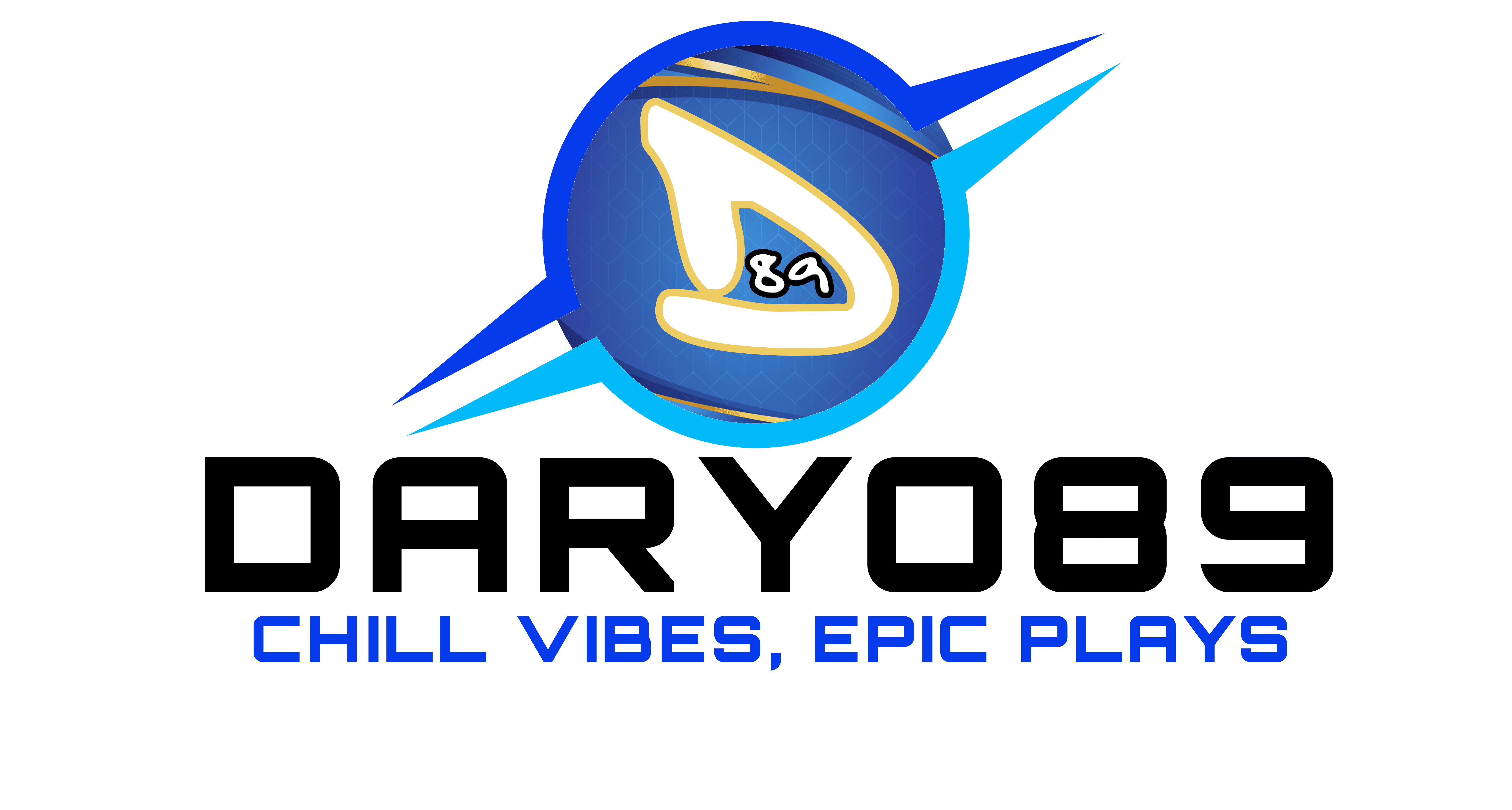
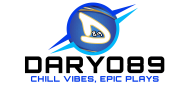



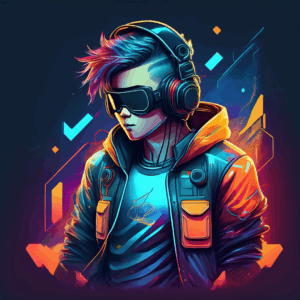

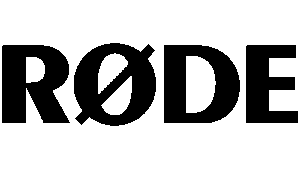


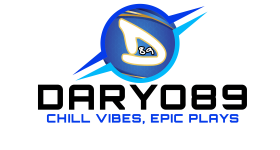

Add comment